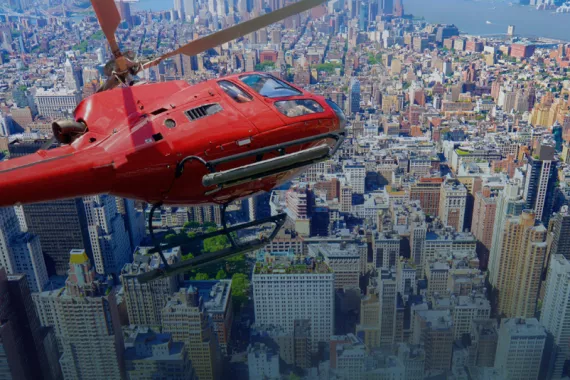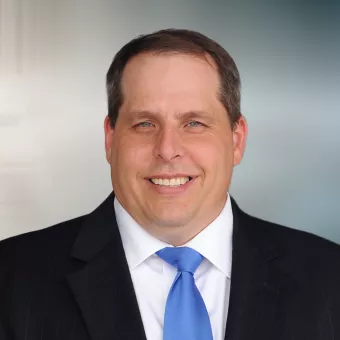
Case Overview
Helicopter accidents are a devastating part of modern aviation. In 2024, there was a fatal helicopter accident every 26 days. Helicopter crash lawsuits can provide closure for victims or their families, compensate people for losses and advocate for improving safety policies and procedures.
Key takeaways about helicopter crash lawsuits
- Helicopter crashes occurred nearly once a month throughout 2024. However, this figure is trending in the correct direction. Just five years ago, there was a fatal helicopter accident every 18 days.
- Pilot error, air traffic control issues, faulty maintenance, design flaws and weather are frequent causes of helicopter crashes.
- Crash victims or their families might be eligible to sue for harms suffered in the crash.
What causes helicopter crashes?
Helicopters are complex machines that require frequent maintenance, capable pilots and well-trained aviation maintenance professionals. A failure by any person or organization can lead to a crash. Below are some of the most frequent causes of helicopter crashes.
Airspace interference or collisions
Helicopters frequently operate in crowded areas — over cities and residential neighborhoods and near airports. Any miscommunication can lead to crashes, injuries or deaths.
Preliminary reports attribute the recent collision between a U.S. Army Black Hawk helicopter and an American Airlines jet to a possible air traffic control error. Everyone aboard both aircraft lost their lives, accounting for more than 70 deaths.
Read more about other experience we’ve had in air traffic control error-related aircraft crashes.
Helicopter maintenance or inspection failures
The mechanical complexity of helicopters makes maintenance and inspections critical. Typically, pilots or mechanics will perform a pre-flight inspection. They may also require inspections after accumulating a certain number of flight hours. Manufacturers often set intervals for inspections every 25, 50, 100, 300 and 500 hours.
Different helicopter components may require different inspection intervals, and the inspections get more thorough as the flight hours accumulate. This is a complex process with many logistical demands, but it helps to keep people safe.
Mechanical failure or design flaws
Design flaws have led to fatal helicopter crashes. In some cases, manufacturers have been slow to address concerns. For example, the Los Angeles Times reported that Robinson Helicopters Co. has faced numerous design-related safety issues for more than 40 years. Fatalities involving the Robinson R44 model have included “preventable post-crash fires,” helicopters losing lift, main rotors coming apart while in flight and main rotor strikes slicing tail booms or cockpits. The manufacturer and the Federal Aviation Administration have both been slow to address these potential design flaws.
The crash of a Leonardo AW169 in the United Kingdom was the result of a bearing failure in the tail rotor. Investigators concluded that Leonardo didn’t require inspections of the bearing and didn’t verify with the bearing manufacturer that it was appropriate to use it as a tail rotor component.
Pilot error
Pilot errors can come from inadequate training, stressful work conditions, personal issues, visibility issues, simple oversight and other factors.
For example, helicopters often operate in crowded airspace, which can turn any error into a catastrophe. The mid-air collision between two news helicopters in Phoenix is just one example. Four people died because the pilots of the two helicopters didn’t see each other. The National Transportation Safety Board (NTSB) determined that the pilots’ workload was too high to stay safe. They were working on creating reports, flying the helicopter and monitoring radio traffic all at the same time. Three other helicopters were also nearby. This crash led to three of the five news stations sharing a helicopter to avoid crowding the airspace during breaking news events.
Weather and visibility issues
Weather was a factor in 28% of helicopter crashes from 2008 to 2018. Regulations allow helicopters to operate in worse weather conditions and at lower altitudes than other aircraft, making them more likely to experience problems during bad weather.
Weather may have been a factor in two 2024 crashes in California. Five Marines died when their helicopter crashed during heavy rain. Three days later, five people died when their helicopter crashed. Aviation experts said the flight should’ve been canceled because of rain and snow in the area.
Who can file a helicopter crash lawsuit?
A settlement or positive verdict in a helicopter crash lawsuit can help victims or their family members recover from injuries, pay for medical expenses and advocate for improved helicopter safety. You may be able to file a lawsuit if one of the parties listed below describes you.
- Family members of victims: May file a wrongful death lawsuit for lost income, companionship and funeral costs.
- Injured crash victims: Can pursue personal injury compensation for medical bills, lost wages and long-term care.
- Estate representatives: May file on behalf of a deceased victim if named in the will or by court appointment.
Who can be held responsible for a helicopter crash?
Plaintiffs can name a number of individuals and parties as defendants in the helicopter crash lawsuit. Potential defendants could include:
- Airports
- Air traffic controllers
- Government agencies
- Helicopter operators
- Maintenance providers
- Manufacturers
- Pilots
A helicopter crash lawyer can help determine who is liable for injuries.
How helicopter crash investigations work
After a civil aviation crash, the National Transportation Safety Board (NTSB) will first determine whether to investigate and whether it needs assistance from other government agencies such as the Federal Aviation Administration (FAA) or Federal Bureau of Investigation (FBI).
Once the NTSB decides to investigate, it will take the following steps:
- Gather facts on-scene, interview witnesses, recover the aircraft
- Analyze the findings
- Issue final reports
Military agencies generally investigate their own crashes, but they may involve civil agencies in the investigation.
Examples of past helicopter crash lawsuits
Below are current and previous helicopter crashes involving the Motley Rice aviation law team.
2025
A U.S. Army UH-60 collided with an American Airlines CRJ700 near Washington, D.C., in January. All aboard both aircraft perished in the crash.
In April, a sightseeing helicopter crashed into the Hudson River in New York City. The tour helicopter crash killed the pilot and a family of five.
2021
A UH-60 crashed in Mendon, New York. All three National Guard personnel aboard were killed. Investigators determined that human error caused the crash.
2020
A Sikorsky UH-60 Black Hawk helicopter crashed in the Sinai Peninsula in Egypt, killing eight international peacekeepers.
2016
Four passengers and one pilot died when a Bell 206L crashed during an air tour in Sevier County, Tennessee. Investigators said the helicopter hit a ridge.
2014
Motley Rice represented the family of a soldier who died when a Sikorsky MH-60 Black Hawk crashed in Georgia. Army investigators concluded that the tail rotor failed, causing the helicopter to spin out of control. The failure was the result of a missing cotter pin and a spanner nut not being torqued to specifications.
2009
Nine people died when a Eurocopter AS 350 collided with a Piper PA-32-R-300 over the Hudson River. Motley Rice represented the families of five Italian passengers aboard the helicopter, which was operated by Liberty Helicopter Tours. The crash led to the establishment of the Hudson Rule, which requires pilots to take extra safety precautions.
Our aviation litigation experience
The Motley Rice aviation litigation team has decades of experience seeking justice for aviation crash victims and their survivors, including the loved ones of military personnel who have died in Black Hawk helicopter crashes.
Motley Rice attorney, author and former U.S. Department of Transportation Inspector General Mary Schiavo often serves as an aviation and transportation analyst for media interviews. Mary is committed to improving aviation safety by advocating for improved policies and practices. She has represented victims and survivors of numerous aircraft disasters, including the Sept. 11 terrorist attacks, several helicopter crashes and many international flights.
Former Air Force navigator James Brauchle has more than two decades of aviation lawsuit experience. He represents the families of Boeing MAX crash victims and handles cases related to commercial and GA aircraft manufacturers.
Key takeaways
What causes helicopter crashes?
Who can file a helicopter crash lawsuit?
How helicopter crash investigations work
Examples of past helicopter crash lawsuits
Our aviation litigation experience
- Sources
- Army Times. National Guard: Human error caused fatal New York helicopter crash.
- AIN. AW169 Crash Investigation Points to Flaws in Part 29 Regs.
- Airfleet Capital, Inc. The ABCs Of Helicopter Maintenance You Must Know.
- Connecticut Post. U.S. Department of Defense cites design flaws with Sikorsky’s Marine Corps helicopter.
- Los Angeles Times. Danger spins from the sky.
- Ramée C, et all. Analysis of Weather-Related Helicopter Accidents and Incidents in the United States. Atlanta, GA, 30332-0150, USA.
- United States Helicopter Safety Team. Monthly Safety Report — January 2025.
- U.S. Army. The Department of Army identifies two of three Army Soldiers involved in Helicopter Crash.
- USA Today. Remembering the 2007 Phoenix news-helicopter crash that killed 4.
Start Your Motley Rice Consultation in Simple Steps
Submit Information
Call us or fill out our online form with the details of your potential case.
Case Review
Our team reviews your information to assess your potential case.
Case Consultation
Talk with us about next steps.


